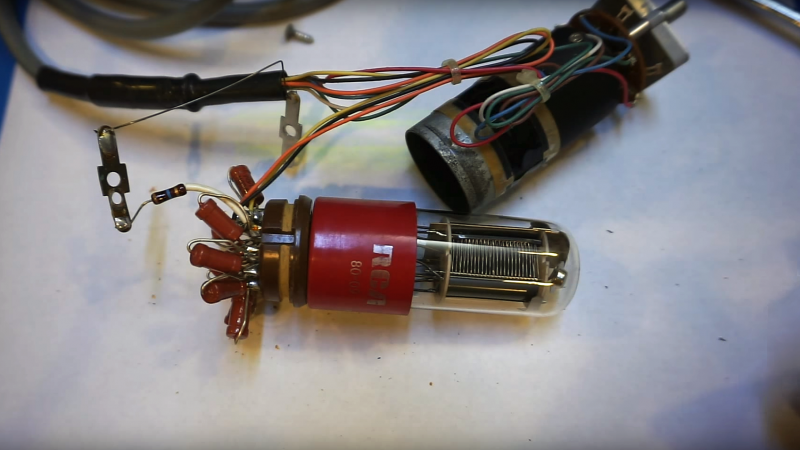If your goal is to harvest unique parts from defunct devices, the further back in time you go, the better the pickings stand to be. At least that’s what [Kerry Wong] discovered during his tear-down of a darkroom color analyzer from the early 1980s.
For readers whose experience with photography has been solely digital, you need to understand that there once was a time when images were made with real cameras on real film, and serious amateurs and pros had darkrooms to process the film. Black and white processing was pretty straightforward in terms of chemistry — it was just developer, stop, and fixing. Color processes were much trickier, and when it came to enlarging your film onto color photo paper, things could get really complicated. [Kerry]’s eBay find, a Besler PM1A color analyzer, was intended to help out in the color lab by balancing the mix of cyan, blue, and yellow components in the enlarger.
The instrument, which no doubt demanded a princely sum back in the day, is actually really simple, with the object of [Kerry]’s desire, a PM1A photomultiplier tube and its driver, being the only real find. Still, it’s an interesting teardown, and we’re eager to see what [Kerry] makes of the gem. A muon detector, perhaps? An X-ray backscatter machine? Or perhaps repeating his old speed of light experiments is on the docket.















Manual: “…the Beseler PM1A uses solid state circuitry.”
[Kerry Wong]: “And here’s our RCA photomultiplier tube.”
Gotta love the marketing speak in the manual. If that’s not misleading, I don’t know what is.
Nice teardown, [Kerry]. Very informative and enjoyable.
I figured as much. I just thought that the wording was a bit ridiculous when the device’s primary component was a vacuum tube.
I seem to recall that TV sets were “solid state” long before LCD sets came along. They got a pass because there was no replacement for a CRT at the time. Everyone knew the meaning, “solid state minus the CRT”. This seems a similar case, it taking time before a suitable solid state replacement for the photomultiplier tube, though I can’t remember if that was the case.
Geiger counters would fit in too,.
Michael
Don’t forget PMT-based scintillation counters :P
Wow. I seem to have touched a nerve with some people.
For clarification, I was merely pointing out what I thought was an obvious and somewhat humorous bit of marketing garbage. Having been alive since the days when vacuum tubes were common in consumer electronics, I fully understand what is meant by “solid state”.
Advert reading.
If it says this it has this, that doesn’t mean that it don’t have the other too. This, does not mean exclusivity.
There were a lot of TV’s that said “transistorized” and still had tubes in the HV-horzontal section some with X-rays. Responsible ad’s would say all solid state except the picture tube when it came to that. There were tube testers in drug stores in the ’80’s. Then it was a non issue.
“mix of cyan, blue, and yellow components”? Those do not a primary set make.
I think he meant cyan, magenta and yellow, the traditional color sets used in enlargers.
Why CYM instead of an RGB source? who knows, but I did a fair amount of darkroom stuff back in the day and I never saw an RGB lamphouse.
Wrong kind of PMT for a muon detector. You really need an end looking PMT since you need to optically match the scintillator to the PMT window which is hard to to with a curved surface.
Actually, people like me and my photography group still develop film and print photos on photographic paper (both black and white and soon color). Recycling and up-cycling equipment are really good ideas, but please, before you take on of these apart for parts ask locally if anyone wants (or indeed needs) equipment like this for their darkrooms as when they’re gone, they’re gone.
Unless someone can come up with new ideas for solving old darkroom problems or processes…